After a brief shower (and minutes before the arrival of a storm that dumped several inches of rain overnight), the mix of dark clouds and streaming sunlight cast a glow as I strolled through the garden, hoping to catch a glimpse of a few blooms before the impending storm blew them to the heavens. The Fringetree (Chionanthus virginicus, below) is most vulnerable to the wind and rain, and after long hours at the office earlier in the week I was determined not to miss the blooms. The delicate flowers last only for a week, and it would be shameful to miss them completely.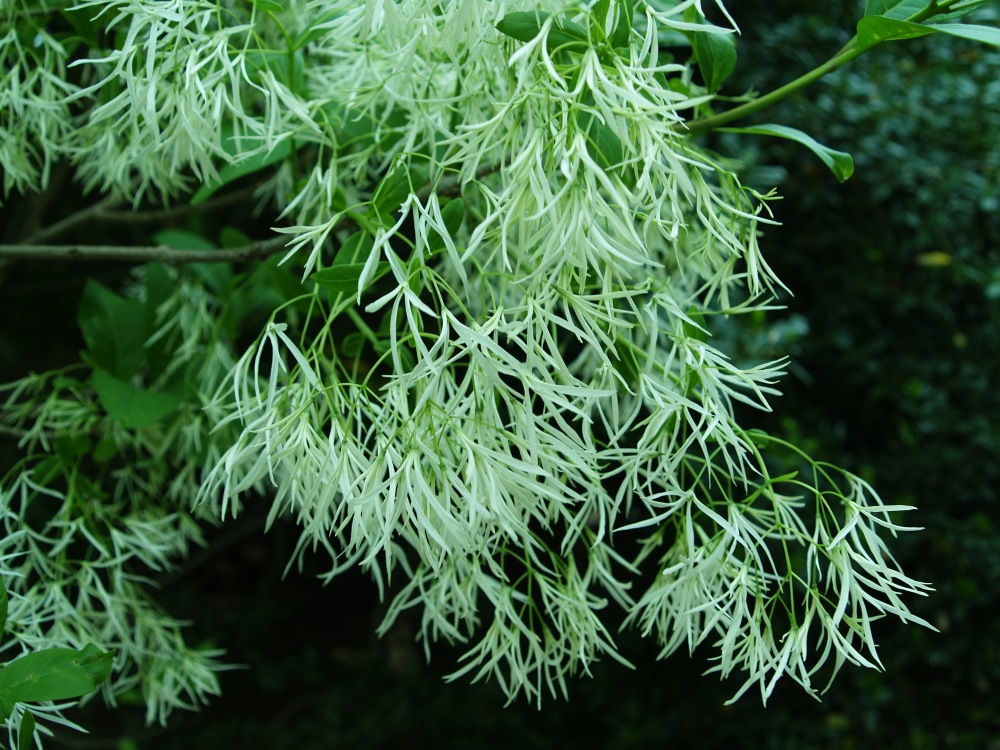
For whatever reason, the fringetree is not particularly common, and I’m delighted and surprised when I see one in a neighborhood garden. I suspect it’s not more popular because it flowers in mid May when it seems every other plant is in bloom, and the flowers are relatively short lived. But, it seems unquestionable that the fringetree is as lovely as any tree, and it deserves greater attention. I’ve planted three, two that are multi trunk clumps, and one that was managed into a single trunk (though each year it grows suckers from the roots, obviously trying to revert to its natural multi trunked state).
Occasionally, I see the Chinese fringetree (Chionanthus retusus) recommended, and I have no doubt that it is a fine tree, but I wonder how this could possibly be an improvement over the exceptional native. I have no bias against non-natives or hybrids, but it seems when two trees are equally splendid, the native should earn the nod. Now, with three native fringetrees in the garden, I’d be happy to plant the Chinese version to be able to compare the two. Since fingetrees are relatively small, it’s possible I could squeeze one in (so long as my wife is not informed in advance).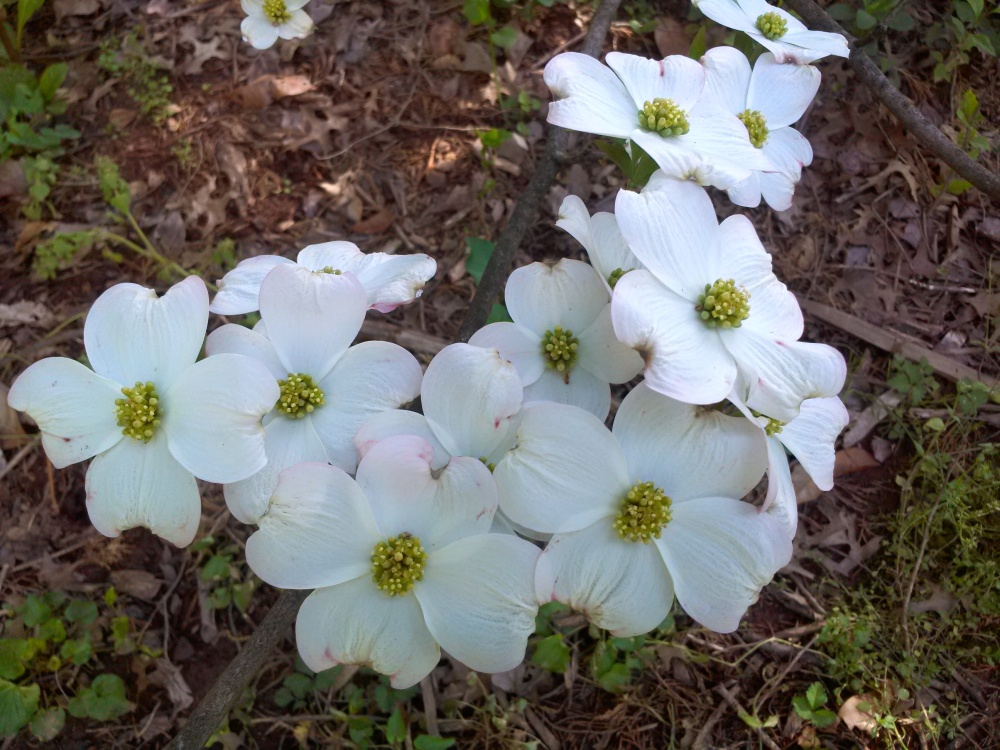
With winter temperatures extending into early April, the flowers of the native dogwoods (Cornus florida, above) were several weeks late, and now the hybrid crosses between the native American and Chinese dogwood (Cornus kousa) are also a few weeks later than usual. While the native dogwood is plagued by cankers and leaf spotting, the hybrids were bred for resistance to these maladies. Without the bothers of mildew and spotted foliage, ‘Stellar Pink’ (Cornus x ‘Rutgan’, below) grows vigorously.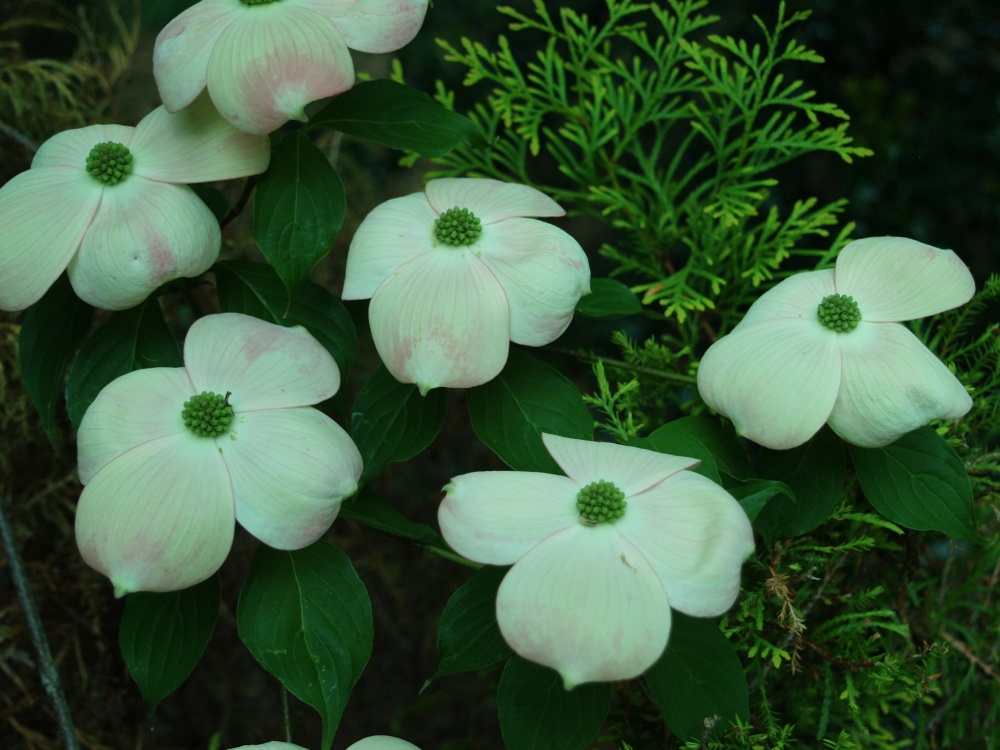
I will admit a bias towards the native dogwood, and despite disease and mildew problems I have little doubt that no tree is their superior. Early on, when I first planted the hybrids I was content in my disappointment that ‘Stellar Pink’ flowered sparsely, and that the flowers were hardly what I would call pink. But, as the tree has grown my attitude has been adjusted. After ten years, the blooms remain white with only a blush of pink, but the tree now displays an abundance of unblemished flowers against a backdrop of fresh green, spotless leaves. Rather than a disappointment, ‘Stellar Pink’ is treasured, and for any gardener who is concerned by the varied maladies that afflict dogwoods, this is a splendid alternative.
In my garden ‘Stellar Pink’ was planted, not instead of the native dogwood, but in addition to. For the garden with adequate space, the hybrids and Chinese dogwoods allow a sequencing of flowers that begins in mid April with the native, and just as these are fading in early May ‘Stellar Pink’ comes into flower. As the hybrids fade by the third week of May, the various Chinese dogwoods come into bloom. So, by planting one native, a hybrid, and a Chinese dogwood there are likely to be uninterrupted blooms for nearly two months.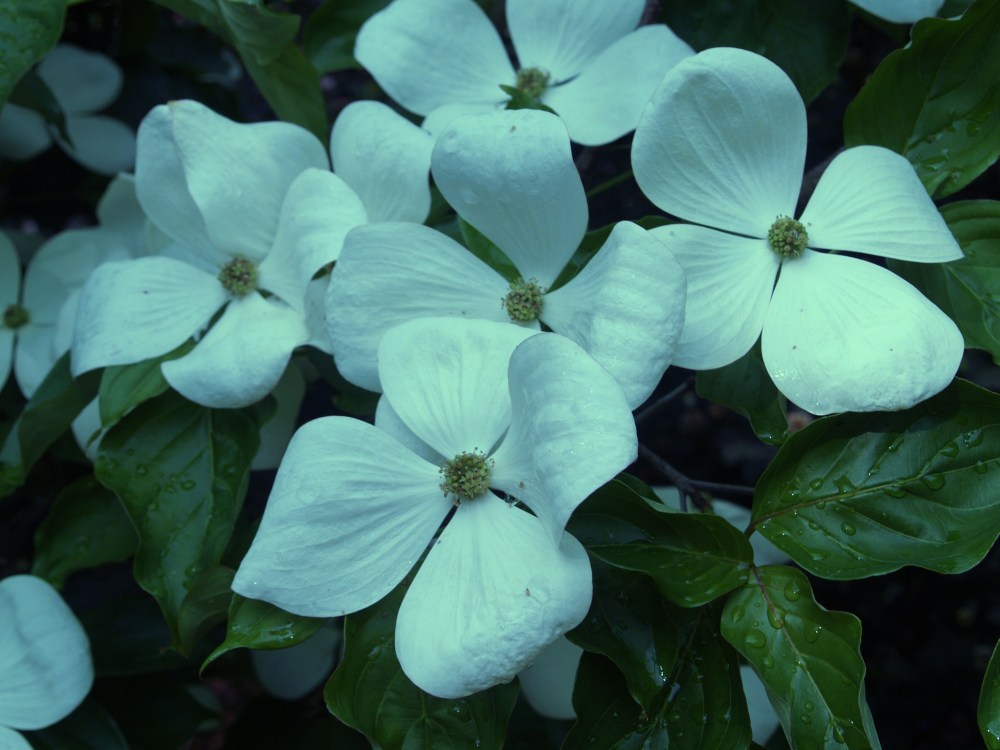
In addition to ‘Stellar Pink’, I’ve planted the large flowered ‘Venus’ (Cornus x ‘KN30-8’ P.P.# 16,309, above), a hybrid between the Chinese and Pacific dogwoods (Cornus nuttalii), and ‘Celestial Shadow’ (Cornus x ‘Celestial Shadow’, below). The variegated leafed ‘Celestial Shadow’ was a chance mutation from the white flowered hybrid ‘Celestial’, and it has proven to be much more vigorous than the variegated native dogwood with similar leaf coloration ‘Cherokee Sunset’, which is annually plagued by powdery mildew. The hybrid dogwoods grow with a more upright form than native dogwoods, and leaves form before the blooms, so they are not exactly a direct substitute, but they have proved to be exceptional trees.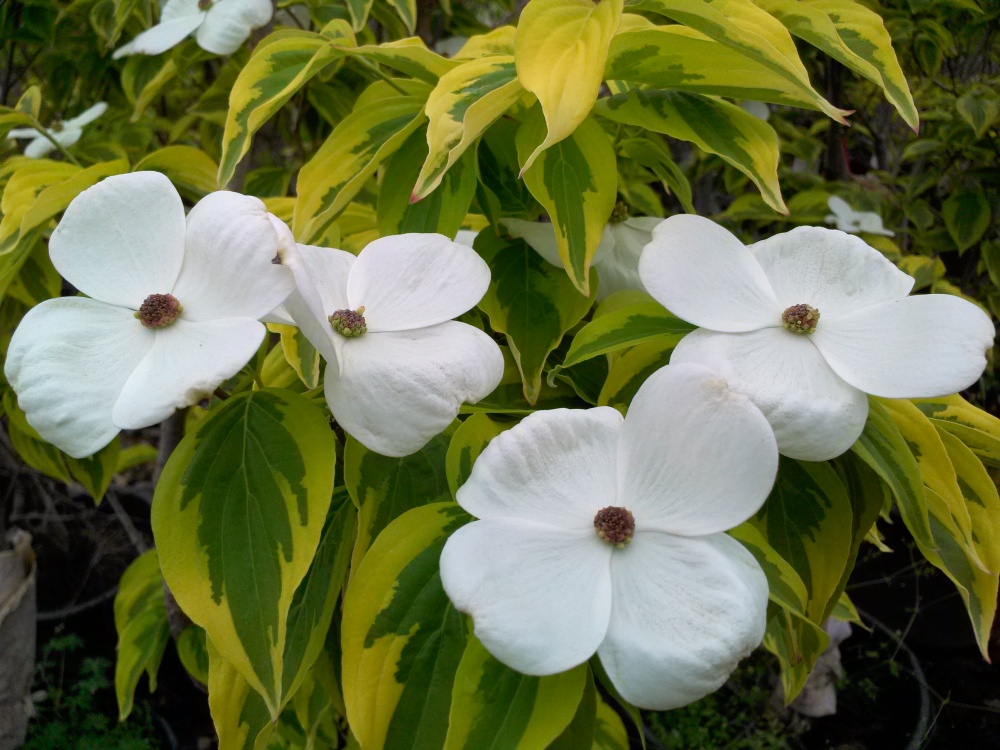
So, this completes the list of trees that are flowering in the garden, in May. In another week the Chinese dogwoods will flower, and there are four or five of these to consider. Then, before the dogwoods fade the wonderful Japanese Stewartia flowers, followed by the various crapemyrtles, and certainly I’ve forgotten one or two that bloom in between these and when Franklinia and Gordlinia begin to flower in late summer. If only there was more space.